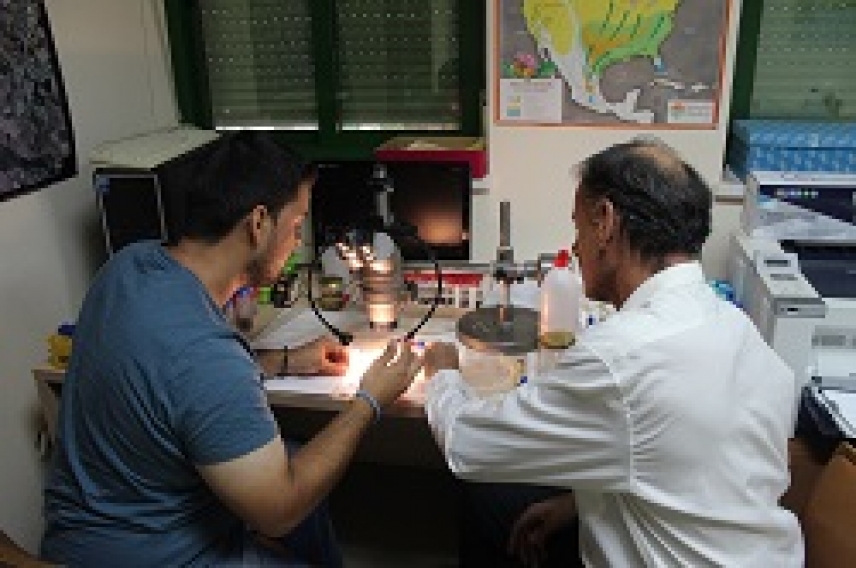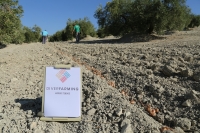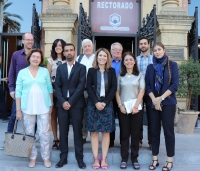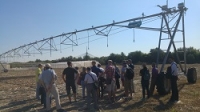La Universidad de Córdoba contribuye a la elaboración de un Tratado de Naciones Unidas sobre fondos marinos
Escrito por UCC+iLa investigadora Eva M. Vázquez es la única representante española de las universidades del país en la redacción de este documento que vendrá a dar certeza jurídica al uso sostenible de la diversidad biológica marina en aguas internacionales
La Universidad de Córdoba será parte fundamental del futuro tratado de las Naciones Unidas que completará el actual régimen jurídico relativo a los recursos genéticos marinos con el objetivo de protegerlos y hacer un uso sostenible de los mismos, desarrollando, entre otras cuestiones, un sistema de reparto equitativo de sus beneficios. Y ello, gracias al trabajo de la profesora de Derecho Internacional Público y Relaciones Internacionales Eva M. Vázquez Gómez, quien negocia actualmente como único miembro de la delegación española procedente de una universidad el futuro Acuerdo de Aplicación de la Convención de las Naciones Unidas sobre el Derecho del Mar de 1982.
La comunidad científica llama a la colaboración ciudadana para controlar la expansión del mosquito tigre
Escrito por UCC+iEl grupo de Ecología Terrestre de la Universidad de Córdoba, que ya ha constatado la presencia de esta especie en tres puntos diferentes, alerta sobre la importancia de controlar la invasión en las primeras fases
Poco más de 14 años ha tardado el mosquito tigre en llegar a la capital cordobesa desde que irrumpiera por primera vez en España. Su presencia era prácticamente inevitable debido a su expansión por el Mediterráneo y otras capitales andaluzas y a pesar de toda la labor que puedan desarrollar las administraciones públicas y la comunidad investigadora, la colaboración ciudadana es “fundamental·” para poder controlar la colonización de esta especie invasora.
El azafrán se asienta en las calles del olivar andaluz
Escrito por UCC+iEl equipo cordobés del proyecto europeo Diverfarming comienza la siembra del azafrán en las calles del olivar
El olivar andaluz adolece de pérdida de suelo. Los surcos que desgarran el terreno en el que crecen los olivos aparecen en cada vez más parcelas, dejando a los agricultores desprovistos de tierra y, por tanto, de una cosecha productiva. La alta erosión de estos terrenos y la baja cantidad de materia orgánica de los suelos desnudos se erigen como dos de las causas principales de los daños de la escorrentía.
La UCO presenta en Bruselas sus proyectos ‘LIFE’ para combatir el cambio climático
Escrito por UCC+iLa Universidad de Córdoba se encuentra entre las organizaciones con más proyectos concedidos dentro del programa europeo
La Universidad de Córdoba ha presentado en Bruselas los tres proyectos con los que participa en el programa europeo LIFE. Se trata de tres investigaciones subvencionadas por la Unión Europea dentro de la categoría de ‘Acción por el Clima’ y con las que se pretende aportar soluciones para lograr objetivos medioambientales y climáticos y promover tecnologías innovadoras en materia de medio ambiente y cambio climático.
Cuatro países mediterráneos se alían para descontaminar las aguas de las zonas rurales
Escrito por UCC+iLa Universidad de Córdoba acoge la primera reunión del proyecto ‘WABA’ en el que 5 centros de investigación internacionales usarán algas y bacterias como herramienta de descontaminación
La primera toma de contacto entre representantes del proyecto internaconal ‘WABA’ se celebra hoy en el Rectorado de la Universidad de Córdoba. El proyecto, coordinado por la investigadora Alexandra Dubini del Departamento de Bioquímica y Biología Molecular de la UCO, busca desarrollar un proceso alternativo capaz de llevar a cabo el tratamiento de aguas residuales de manera sostenible y ecológica. Para ello, utilizarán el consorcio entre microalgas y bacterias
Buscan la manera de mejorar la productividad de cultivos mediante el uso óptimo de agua y suelos en la UE y en China
Escrito por UCC+iEl consorcio internacional del proyecto Shui, en el que participa la Universidad de Córdoba, busca incrementar la eficiencia en la gestión de recursos para mejorar la competitividad en la agricultura
Desarrollar nuevas estrategias para incrementar la productividad en los sistemas de cultivo mediante la optimización de los recursos limitados. Este es uno de los objetivos principales de ‘SHUI’, un proyecto de investigación coordinado desde el IAS-CSIC (Instituto de Agricultura Sostenible) y en el que participa la Universidad de Córdoba junto a otros 19 socios internacionales.







